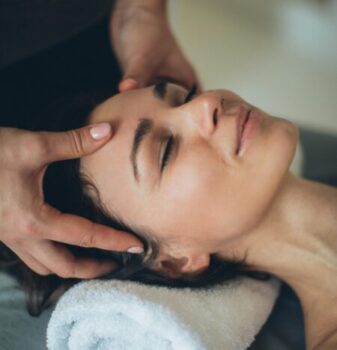
The Hidden Health Benefits of Indian Head Massage: Supporting Your Vagus Nerve
In today’s stress-filled world, more clients are seeking therapies that go beyond relaxation and offer genuine support to their overall well-being. One such therapy is Indian Head Massage, a traditional Ayurvedic treatment that can do more than ease tension – it may also benefit a key player in our body’s nervous system: the vagus nerve.
But what exactly is the vagus nerve, and how can Indian Head Massage support it?
Understanding the Vagus Nerve
The vagus nerve is the longest cranial nerve in the body, running from the brainstem through the neck and into the chest and abdomen. It plays a central role in the parasympathetic nervous system, often called the “rest and digest” system, which helps calm the body after periods of stress.
When the vagus nerve is functioning well, we experience:
* Slower heart rate
* Improved digestion
* Better sleep
* Reduced anxiety
* A stronger immune response
This is often referred to as “vagal tone”, and improving it is linked to better resilience and emotional regulation.
How Indian Head Massage Can Stimulate the Vagus Nerve
Indian Head Massage focuses on the scalp, face, neck, and shoulders, all of which are closely connected to the vagus nerve and related cranial nerves. Here’s how this ancient therapy may help stimulate vagal tone:
- Relaxation of the Neck and Shoulders
Tension in the neck and upper shoulders can restrict blood flow and irritate nerve pathways. Gentle massage in these areas helps to release tight muscles and reduce physical stress, allowing the vagus nerve to function more freely.
- Scalp Stimulation
Stimulation of the scalp can influence the trigeminal nerve, which has links to the brainstem near the vagus nerve’s origin. This sensory input encourages parasympathetic activity, helping to soothe the nervous system.
- Gentle Facial Massage
The face contains several branches of cranial nerves, and massaging areas around the jaw, cheeks, and brow may indirectly activate parasympathetic responses. This can enhance feelings of calm and safety – key conditions for vagus nerve activation.
- Deep Breathing and Grounding
Indian Head Massage often includes breath awareness or grounding techniques, which are well-known methods of increasing vagal tone. When combined with massage, these practices can be particularly effective at calming the nervous system.
Client Benefits of Supporting the Vagus Nerve
By supporting vagal tone through Indian Head Massage, clients may experience:
Improved stress resilience
Better emotional balance
Relief from tension headaches or migraines
Reduced anxiety symptoms
Improved digestive comfort
Enhanced sleep quality
These benefits align beautifully with a holistic approach to wellness and can be especially helpful for clients dealing with burnout, anxiety, or chronic stress.
A Natural Complement to Modern Wellness
As more people explore nervous system regulation and trauma-informed care, Indian Head Massage offers a gentle, natural way to support the body’s own healing systems. Unlike medications or more invasive therapies, it promotes healing through touch, connection, and relaxation – tools that are increasingly recognised for their power to regulate the nervous system.
The vagus nerve may be hidden from sight, but its impact on our well-being is profound. By including Indian Head Massage in your self-care or therapeutic routine, you can support this vital nerve, helping your body shift from “fight or flight” into a state of true rest, healing, and balance.
